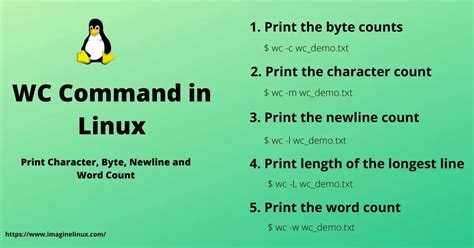When it comes to text processing on Unix systems, few utilities are as venerable as ‘wc’ (word count). This seemingly simple program is a quintessential tool used to count lines, words, and characters in files. However, recent developments have revealed new avenues for optimizing ‘wc’, thanks to advanced techniques such as state machines and SIMD (Single Instruction, Multiple Data). The potential for performance enhancements is significant, yet the journey isn’t without its complexities and debates.
One of the core discussions revolves around the application of state machines as a means to streamline the word counting process. State machines are used to manage states and transitions efficiently, reducing the overhead of branching—especially in the context of character parsing. A user aptly noted, ‘Just remember, if you’re ever debugging something and some values in a Class/Object/Group of them are set and others are unset, the state machine avoids that issue.’ The essence here is that state machines can help prevent common bugs while ensuring the transition between states is clean and predictable.
Delving deeper, it’s essential to understand why ‘wc’ wasn’t initially designed as a state machine. Traditional implementations of ‘wc’ rely heavily on functions like `mbrtowc()` for multi-byte character parsing and `iswspace()` to test for whitespace. These utilities help handle different character sets, but they come at a performance cost. By rethinking the design to skip unnecessary operations, like re-creating substrings in `mbrtowc()`, there’s potential for significant speed-ups. The impact of omitting steps that recreate the provided substring is non-trivial; it’s an approach that aligns well with the fundamentals of state machine design, which can simplify the parser into state transitions based on character classes.
The discussion extends into other optimization techniques, particularly the role of SIMD. SIMD allows processing of multiple data points with a single instruction, enabling tremendous performance gains in data-parallel applications. One user questioned why SIMD wasn’t a primary focus, stating, ‘I’m surprised there is no mention of SIMD. Like I’m sure this is ‘fast enough’ but if you want to make a really fast wc for fun wouldn’t that be a natural direction?’ However, another pointed out, ‘A hand-written SIMD wc is likely to be even faster than a state machine, but at the cost of orders of magnitude more work.’ Indeed, while SIMD implementations can be extraordinarily fast, they also require intricate, low-level programming that isn’t easily generalized across applications.
Another user took the plunge and shared a small code snippet on implementing an ASCII SIMD-based `wc`, showing a noticeable speed boost even on aging hardware. They noted, ‘On an aging 2.5 GHz Broadwell, I’m seeing 3200 MB/s for my first attempt at an x86-64-v3 SIMD implementation.’ This showcases how modern processors can leverage SIMD instructions to outperform traditional methods, achieving more than a 10x speedup in specific scenarios. Yet, while impressive, this optimization path raises questions about complexity and maintainability.
Language choice also plays a pivotal role in how effectively these optimizations can be applied. Some users pointed out that languages with support for discriminated unions or advanced pattern matching (like Rust) could provide robust alternatives to manually implementing state machines. As one comment suggested, Rust’s type system, with its ‘Result’ for error handling and ‘enum’ for state representation, makes state machines clear and less error-prone. The advantages of default move semantics and atomic object construction in Rust further enhance reliability and performance.
In summary, optimizing ‘wc’ is a multi-faceted challenge that spans from the high-level concept of state machines to the intricate details of SIMD. Whether you favor the elegance of state machines or the raw speed of SIMD, the potential for improvement is clear. However, these optimizations come with trade-offs in terms of complexity and maintainability, which must be carefully considered. Given the diversity of user needs and hardware capabilities, it is likely that a blend of these techniques—or custom solutions tailored to specific contexts—will offer the best results.


Leave a Reply